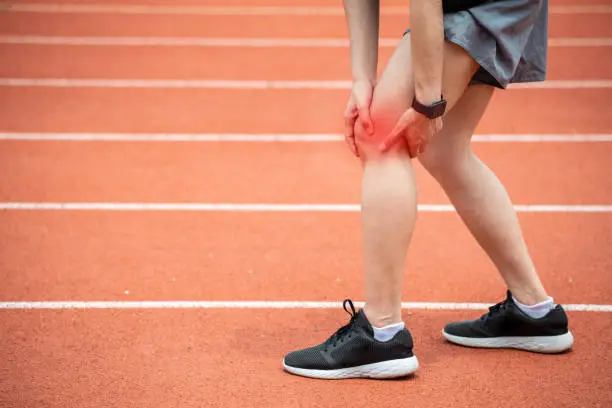Iliotibial Band Syndrome (ITBS) is a prevalent overuse injury, especially among runners, cyclists, and athletes engaged in repetitive knee-bending activities. Characterized by pain on the outer part of the knee, ITBS can hinder daily activities if not addressed promptly. This article delves into the symptoms, causes, and physiotherapy treatments for ITBS, aiming to provide a comprehensive understanding of the condition.
What is Iliotibial Band Syndrome?
The iliotibial (IT) band is a thick band of fascia running from the hip to the shinbone, playing an important role in stabilizing the knee during knee movement. ITBS occurs when it becomes tight or inflamed, which will lead to friction over the lateral femoral epicondyle. This leads to pain and inflammation, commonly known as “runner’s knee.”
Symptoms of ITBS
- Lateral Knee Pain: Sharp or burning pain on the outer side of the knee, often worsening with activity.
- Swelling: Inflammation around the knee area.
- Clicking Sensation: A snapping or popping feeling during knee movement.
- Tenderness: Sensitivity when pressing on the outer knee.
- Pain During Activities: Discomfort during activities like running, cycling, or climbing stairs.
Causes and Risk Factors
- Overuse: Repetitive activities without adequate rest results in ITBS.
- Biomechanical Issues: Poor running form, leg length discrepancies, or flat feet.
- Muscle Imbalances: Weakness in the hip abductors or gluteal muscles leads to ITBS.
- Improper Training: Sudden increases in activity intensity or duration.
- Inadequate Footwear: Worn-out or unsupportive shoes.
Physiotherapy Treatment for ITBS
Physiotherapy plays a pivotal role in managing and recovering from ITBS. A structured approach includes:
1. Rest and Activity Modification
Initially, reducing or modifying activities that exacerbate symptoms is essential. This allows inflammation to subside and prevents further irritation.
2. Stretching Exercises
Regular stretching helps alleviate tightness in the IT band and surrounding muscles:
- IT Band Stretch: Cross one leg behind the other and lean away from the back leg to stretch the outer thigh.
- Quadriceps and Hamstring Stretches: Maintain flexibility in the front and back thigh muscles.
- Hip Flexor Stretch: Target the muscles connecting the pelvis and thigh.
These stretches should be performed gently and held for 20-30 seconds, repeating multiple times daily.
3. Strengthening Exercises
Building strength in specific muscle groups can correct imbalances:
- Hip Abductors: Side-lying leg raises to strengthen the gluteus medius.
- Gluteal Muscles: Bridges and squats to enhance overall hip stability.
- Core Muscles: Planks and abdominal exercises to support proper posture and movement.
4. Manual Therapy
Techniques such as myofascial release, soft tissue manipulation and foam rolling can reduce tension in the IT band:
- Foam Rolling: Rolling the outer thigh gently to alleviate tightness.
- Myofascial Release: Professional MFR to release muscle knots, relaxes muscle and improves circulation.
- IASTM– It is a type of muscle release using the instruments to relax the muscles, fascia , open the muscle knots , to increase the circulation etc.
5. Modalities
Additional therapies may include:
- Ice Therapy: Applying ice packs to reduce inflammation.
- Ultrasound Therapy: Using sound waves to promote healing in deep tissues.
- Electrotherapy: Electrical stimulation to manage pain and encourage muscle activation.
- Accelerated Healing Therapy: It is the most advanced electrotherapy as it helps in accelerating the healing process of the tissues.
6. Education and Training Modification
Educating patients on proper techniques and training regimens is crucial.
- Gait Analysis: Assessing and correcting walking or running patterns.
- Training Plans: Developing gradual progression schedules to prevent overuse.
- Footwear Assessment: Ensuring shoes provide adequate support and cushioning.
7. BFRT
It helps in regaining muscle strength in minimal efforts by doing low intensity exercises and gaining the same benefits of high intensity training. It helps in accelerating the recovery of the involved tissues.
Prevention Strategies
Preventing ITBS involves a combination of proper training and self-care:
- Gradual Progression: Increase activity intensity and duration slowly.
- Regular Stretching: Maintain flexibility in the IT band and surrounding muscles.
- Strength Training: Incorporate exercises targeting the hips, glutes, and core.
- Proper Footwear: Use shoes appropriate for your activity and foot type.
- Cross-Training: Engage in various activities to prevent overuse of specific muscle groups.








